What is a Resistor
2023-11-14
7560
Catalog

Figure 1: Fixed Resistors
When we look closely at this process, we see that a resistor is far from a simple component in a circuit. It is actually a core mechanism that subtly regulates current and electrical energy. This requires not only precise calculations of heat, but also deep insights into materials science. For example, various types of resistive materials—from carbon films to metal films to metal oxide films—have unique current resistance and heat capacity characteristics. Therefore, such diverse options give circuit design richer and more flexible possibilities.

Figure 2: Fixed Resistors
Take metal oxide film resistors as an example, which are commonly used in industrial environments due to their high temperature stability. Relatively speaking, carbon film resistors are often used in consumer products due to their low cost and ease of manufacturing. This material choice not only affects the performance and durability of the resistor itself, but further determines its versatility in electronic devices.

Figure 3: Fixed Resistors
A resistor is not an isolated or single element, but is key to ensuring reliable operation of all types of circuits and more complex electronic equipment. It is not only a "regulator" of current and electrical energy, but also injects new vitality into the entire system through its material selection and design concepts. Resistors ensure efficient and precise balance between electrical energy and thermal energy in multiple aspects, thus providing a solid foundation for the stable operation of circuits and electronic equipment in various application environments.
Exploring the multidimensional properties of resistors reveals their wide range of types and applications. From fixed resistors, variable resistors to special resistors, each has its own applicable application scenarios and advantages. For example, low-resistance copper-nickel alloy resistors are suitable for battery management and electric vehicles, while high-resistance metal oxide film resistors are commonly used in high-precision measurements and sensors, both demonstrating the diversity of their application value. Taking electric vehicles as an example, copper-nickel alloy resistors can effectively manage battery usage and ensure long-term stable supply of electricity due to their low temperature coefficient and high conductivity. Meanwhile, in terms of high-precision measurements and sensors, metal oxide film resistors ensure data reliability and accuracy through their high-temperature stability and accuracy.
One of the resistor classifications: fixed resistors
Fixed resistors are usually considered the most basic and common type in the resistor family. Once the resistance value is set, it cannot be adjusted. However, it would be a mistake to assume that fixed resistors are dull or mediocre. Short sentences, perhaps confusing. From a more subtle and complex materials science perspective, this class of resistors is actually a diverse and unique family of resistors including carbon film resistors, metal film resistors, and metal oxide film resistors. Collection of subcategories.
In this colorful collection, various fixed resistors have immutable resistance values, but due to their unique structure and material selection, they can show their own distinct performance advantages in different application scenarios. Short sentences that provide contrast. For example, consider carbon film resistors, which are often used in applications where excessive precision and reliability are not required due to their relatively simple and low-cost manufacturing process. Carbon film resistors tend to be the first choice in most embedded systems and some small home appliances.

Figure 4: Carbon Film Resistor
From another perspective, metal film resistors have higher standards in terms of accuracy and stability and are often used in more complex situations with stricter performance requirements. Specifically, medical devices such as electrocardiographs often use metal film resistors to ensure the accuracy and reliability of measurement data.

Figure 5: Metal Film Resistors
Furthermore, metal oxide film resistors, with their excellent temperature stability, are ideal for use in high-temperature environments or electronic equipment that requires continuous operation for long periods of time. In applications such as industrial control systems and automation equipment, the choice of metal oxide film resistors is almost a no-brainer.

Figure 6: Metal Oxide Film Fixed Resistor
Taken together, fixed resistors are by no means a single or rigid category of electronic components. Instead, they form a complex collection of multiple subcategories, each with characteristics that make it superior to specific applications and environments. Therefore, this type of resistor has shown its irreplaceable application value in many aspects of electronic engineering.
Resistor classification two: variable resistor
In this large family of resistors, the variable resistor or potentiometer stands out for its diverse and flexible adjustment capabilities. Its resistance value is not static, but can be carefully adjusted manually or automatically. This adjustment usually relies on a series of physical interfaces - knobs, sliders or other adjustment organs - to implement. Looking more closely, a variable resistor is actually a complex, which includes multiple subcategories such as adjustable resistors, graduated potentiometers, and multi-turn potentiometers, each of which has its own unique adjustment mechanism and structural configuration. , thus providing more subtle and precise adjustment options for current or voltage control in different application contexts.

Figure 7: Adjustable Resistor

Figure 8: Adjustable Resistor

Figure 9: Adjustable Resistor

Figure 10: Adjustable Resistor
Taking adjustable resistors as an example, this configuration is widely used where speed is required but top accuracy is not necessarily required. Think of volume controls in home audio equipment: the user simply turns a volume knob, and the volume can quickly rise or fall.
Graduated potentiometers, on the other hand, exhibit artistic finesse of adjustment. In applications such as laboratory measuring instruments or high-precision engineering applications, this type of potentiometer allows highly precise regulation of current or voltage with its built-in scale. This is essential in precision measurement equipment where fine-tuning of current changes is required.
Looking at the multi-turn potentiometer, this resistor is almost to the extreme in terms of accuracy. The user requires multiple rotations to cover its entire adjustment range, resulting in more detailed control precision. In advanced scientific research or high-precision manufacturing scenarios, the use of this type of potentiometer has almost become standard.
Finally, due to their inherent versatility and flexibility, variable resistors find varying degrees of importance in a variety of applications, from everyday household products to high-tech research equipment. More than just an "adjustable component" in an electronic circuit, it is a tool carefully designed for precise control.
Resistor Classification Three: Special Resistors
Specialty resistors, a category that differs from regular resistors and are precision engineered to suit specific tasks and environments. In addition to fulfilling the basic role of ordinary resistors, these small components can also meet the advanced performance requirements unique to specific application scenarios. Taking temperature sensing as an example, thermistors are widely used in this scenario. These resistors include positive temperature coefficient (PTC) and negative temperature coefficient (NTC), whose resistance value adjusts with temperature fluctuations to accurately reflect the temperature reading. Clearly, positive temperature coefficient (PTC) resistors are particularly valuable in air conditioning or heating equipment, where they increase resistance after a certain temperature threshold is reached, preventing the equipment from overheating.

Figure 11: Special Resistor
Likewise, in high frequency and radio frequency circuits, attenuators and load resistors are special resistor types that are indispensable. These resistors are primarily found in high-end communications and signal processing equipment and are specifically designed to reduce noise and other interference in signals. In precision environments such as satellite communications, the function of the attenuator is to balance the transmitted signal and prevent information distortion caused by excessive signal strength.

Figure 12: Special Resistor

Figure 13: Special Resistor
Overall, special resistors have shown their unique value in a variety of complex and special environments due to their high degree of specialization and versatility. Whether in precision scientific instruments or large-scale industrial applications, these resistors enhance overall system reliability while also providing fine adjustment and control. This not only makes them an important factor in current and voltage management, but also renders them highly customizable in solving application-specific problems.
The role of resistors
One of the functions of a resistor: limiting current
When it comes to current control, resistors are almost everywhere in circuit design. This is not a simplification. Resistors, in addition to being a passive component, can also subtly adjust circuit performance to ensure that the current remains within a certain range. This is mainly achieved by providing a specific resistance value. Put a resistor in series? This is not only an effective way to reduce the current, but also a preventive measure to avoid excessive current causing irreparable damage to other vulnerable electronic components.
Ohm's Law, or Ohm's Law, reveals the relationship between current (I), resistance (R) and voltage (V), the expression is I=VRI=RV. By increasing the resistance value, the current flowing through the circuit naturally decreases; conversely, the current increases. This is not only the beauty of mathematics, but also a key means to accurately regulate the flow of current.
What problems can high currents cause? Heat loss, even worse, can cause electronic components to retire prematurely or short out. What are the representatives of sensitive components? Microcontrollers, sensors, micromotors.
Take the LED circuit as an example, it is simple but practical. LEDs typically can only handle about 20 milliamps (mA) of current. Exceeding this limit may not only damage the LED, but also shorten its life. solution? Adding a suitable resistor to the circuit allows precise control of the current flowing through the LED, ensuring it operates within a safe range.
Not only fixed resistors, potentiometers and adjustable resistors can also be used for current control, especially where high precision or adjustable brightness is required. These adjustable elements give the user more freedom of control.
A resistor is more than just a tool. In a wide range of current control applications, from simple current limiting to more complex operations, they are almost a necessity in circuit design. Understanding how resistors work, and how to pick the right type, is key for circuit designers to improving circuit reliability and efficiency.
The second role of the resistor: adjust the voltage
In the rich universe of electronic applications, accurately adjusting voltage has become a core task that cannot be ignored, especially in scenarios where delicate control is crucial. Variable resistors, in this context, not only shine as voltage dividers, but quite literally, by subtly manipulating resistance values, they have the ability to induce multiple, varied voltages in a sea of circuits. voltage level.
A variable resistor is, in fact, a three-terminal electronic device, one of which is the flexible sliding contact. It's the movement of this sliding contact that gives you the opportunity to manipulate the resistance value, thereby gradually changing the voltage. This attribute is undoubtedly a huge asset in practical applications. Why? Because this feature gives the user the power to subtly and precisely adjust the voltage without making fundamental changes to the entire circuit.
Take the sound system as an example, the volume control knob is a very vivid example. When you leisurely turn this little knob, you are actually changing the resistance value of a variable resistor. This change has a noticeable effect on the voltage level of the audio signal, resulting in the ultimate volume adjustment.
When it comes to backlight technology for liquid crystal displays (LCDs) or light-emitting diodes (LEDs), the importance of variable resistors remains unabated. By fine-tuning the resistor value, you can control the current flow of the backlight, thereby finely adjusting the screen brightness to achieve optimal eyeball comfort.
When exploring high-precision applications, such as those requiring fine voltage adjustments, we often see digital variable resistors. They are closely integrated with microcontrollers, and together they achieve a level of precise to near-perfect control, meet the needs of extremely professional applications, and promote a wave of significant improvements in the efficiency of energy management.
However, challenges also exist. The use of variable resistors is not without risks; if handled incorrectly, it may push the circuit to the edge of instability, or even cause a reversal of performance. Therefore, in the early stages of circuit design, thoughtful selection of the appropriate type and specification of a variable resistor becomes critical.
The adjustment flexibility and voltage control capabilities of variable resistors are self-evident in the electronic world. They not only open up a convenient way in a wide range of applications from simple home appliances to high-end equipment, but also demonstrate their importance in every detail of circuit design and practical application. This emphasizes the necessity of in-depth understanding and correct application of these components, which is not only a technical requirement, but also the pursuit of innovation and accuracy.
The third role of resistors: distribute energy
In circuit design, delicately distributing energy is not only an art, but also an engineering challenge that cannot be ignored, especially when the goal is to distribute current or voltage evenly among different components or branch circuits. The resistor here is not simply a participant in energy distribution; in fact, through a series of precise calculations and designs, the resistor can achieve a balance of current and voltage among the various components of the system. Putting it all together, the result is a perfect circuit system that is both efficient and stable.
Voltage divider resistors, with their ability to accurately distribute current or voltage, have become an indispensable solution in highly complex systems. They balance the current between multiple nodes of the circuit by setting specific resistance values, especially when multiple loads work in parallel, their role is particularly critical.
Widely used? Absolutely. From power management to audio equipment, the influence of voltage divider resistors spans many fields.
Case 1: Power management - In multi-power systems, such as laptops and mobile devices, the current needs of different power modules are managed in an orderly manner through voltage dividing resistors. This mechanism ensures that each module receives appropriate power supply, thereby maintaining the operating efficiency and stability of the entire system.
Case 2: Audio equipment - In a multi-channel sound system, voltage dividing resistors distribute current to each speaker to equalize the volume between different audio channels.
The selection of resistor value is very critical. Not only does it affect the distribution ratio of current and voltage, but depending on the type and specification of resistors used, varying degrees of distribution accuracy may occur. Therefore, choosing the appropriate resistor value based on actual application requirements has become a crucial link.
Of course, resistors do more than distribute energy in a circuit. The stability of the current and the overall efficiency of the circuit are also affected. Choosing an inappropriate resistor may cause current instability or energy loss, which are problems that must be avoided during the design process.
Resistors perform extremely important functions in circuit energy distribution. Whether it is from basic function adjustment of home appliances to advanced control of industrial applications, a suitable resistor configuration is the decisive factor in ensuring efficient and stable operation of the circuit. Therefore, understanding how resistors play a key role in these aspects, and knowing how to accurately select and configure resistors, is of immeasurable value to circuit designers and engineers.
The fourth role of resistors: stabilizing voltage
Ensuring the voltage stability of resistors in a circuit, especially in high-precision or highly sensitive applications, is often considered a paramount task. The precise placement of the resistors between the power supply and the load element is actually a technical means to effectively suppress any unnecessary fluctuations in voltage and prevent the voltage from exceeding safe thresholds - all together ensuring that the load element not only functions properly operation and extend its life.
According to Ohm's law—a simple yet revealing physical law—there is an inherent connection between current, voltage, and resistance. This connection gives resistors a unique ability: by carefully choosing the resistance value, they can control voltage in an unerring manner.
Let’s dig deeper. Let’s experience this based on several actual cases.
Case 1: Medical equipment. In environments such as life support systems or medical monitoring instruments, even trivial voltage fluctuations can have troubling consequences, including equipment malfunctions or false alarms, which pose potential risks to patient health. Therefore, here, the function of the resistor is particularly critical.
Case 2: Data center field. Servers and storage equipment in data centers have strict standards for voltage stability. Once a server crashes due to voltage issues, the consequences are not limited to large-scale data loss, but may also cause the entire system to shut down.
Of course, the specific needs of the circuit dictate the choice of resistor type and value. It is worth noting that, for example, metal film resistors and carbon film resistors have different performance in terms of voltage stability. Therefore, careful selection can significantly improve circuit stability.
In fact, the responsibility for stabilizing the voltage does not fall entirely on the resistor. Working in conjunction with other components such as capacitors and voltage regulators, system performance can be further enhanced.
By fully understanding the complex role of resistors in controlling voltage in circuit design, and how to accurately select and configure them, the quality of circuit design can be greatly improved. This improvement is particularly evident in high-risk and demanding application environments such as medical, military and aerospace.
The fifth role of resistors: temperature compensation
When it comes to highly specialized applications such as temperature compensation, certain resistor types - such as thermistors - offer unusual advantages. These resistors are able to automatically adjust their resistance value in response to subtle fluctuations in ambient temperature, a feature that has found widespread use in temperature sensors, temperature compensation circuits, and other real-time temperature monitoring and regulation scenarios.
Thermistors are primarily constructed of ceramic or polymer materials. When the ambient temperature changes, the density and mobility of charge carriers - such as electrons and holes - inside these materials also change accordingly, resulting in a change in resistance.
Real-life applications, let's talk.
Case 1: Consider household water heaters. In this device, a thermistor monitors the water temperature and ensures that it fluctuates within a predetermined range. This not only improves energy efficiency, but also avoids potential safety risks caused by abnormal water temperatures—too high or too low.
Case 2: Complex electronic systems of modern automobiles. For example, in an engine control unit (ECU), a thermistor performs temperature compensation tasks. If vehicle speed or load changes, this will affect engine temperature. At this time, the thermistor can respond quickly and adjust its resistance value to ensure that the circuit continues to operate stably.
When choosing a thermistor, you need to evaluate several aspects: its response speed, stability, and performance under different temperature conditions. Furthermore, these resistors often need to be coordinated with other components—such as temperature sensors or microcontrollers—to achieve accurate temperature compensation.
Combining these in-depth analyzes and practical application examples, the broad applicability and multifaceted considerations of thermistors for temperature compensation become apparent, reinforcing their credibility and practical scope in this specific field.
The sixth role of resistors: filtering and attenuation
Filtering and attenuation are commonplace in the application field of electronic circuits, but they are actually very challenging. The combination scheme formed by connecting resistors and capacitors in series is often used to build filter circuits. The purpose is to purify signals and remove noise and various types of interference, so as to achieve the optimal state of electrical signal quality and accuracy.
In such a filter circuit composed of resistors and capacitors, the resistor is responsible for limiting the current, and the capacitor is used to store and release electrical energy. The result of the interaction between the two is that high-frequency noise and spurious interference are effectively reduced or eliminated, leaving only necessary signal elements.
Practical application? There are so many.
Case 1: Sound system. In complex audio or music playback equipment, filter circuits are often used not only to separate different frequency components of audio signals—such as bass, midrange, and treble—but also to significantly improve sound quality and help extend the service life of the equipment.
Case 2: Communication equipment field. In wireless communication devices such as mobile phones and routers, the role of filter circuits cannot be underestimated. They are mainly used to neutralize electromagnetic interference and ensure that communication signals can maintain stable transmission in various environmental factors.
Choosing the resistance and capacitance values in circuit design is undoubtedly a crucial link. The setting of these parameters is not accomplished overnight, but requires fine adjustments based on the application scenario and signal frequency. Using high-precision resistors and capacitors often results in a qualitative improvement in performance.
Therefore, just understanding the basic concepts of filtering and attenuation, coupled with the support of successful cases in multiple application scenarios, is enough to convince people that resistors are irreplaceable in this application field. This not only makes the overall description more convincing, but also provides readers with richer perspectives and practical information.
The seventh role of resistors: calibration and matching
Calibration and matching, in the field of precision measurement and testing, undoubtedly demonstrate the unparalleled accuracy and meticulousness of resistors. Especially when data or parameters need to achieve surprising accuracy, the influence of resistors cannot be ignored.
For instrument calibration, standard resistors are often used as a control to compare with the device or instrument under test. The purpose of this? Ensure strict accuracy of measurement data. These resistors have a high-precision set of resistance values that serve as the gold standard for comparison.
Not only that, resistors also serve to match circuit parameters—such as current, voltage, impedance, etc. Such matching ensures robust and efficient operation between circuit components.
So, what about practical applications?
Consider Case 1: In the context of bridge measurement technology, standard resistors ensure the accuracy of the calibration of the measuring equipment. This link has an impact that cannot be ignored, from laboratories to industrial production lines, and even quality control.
Turning to Case 2: In radio frequency applications, impedance matching is particularly important. Using resistors with specific resistance values, impedance matching can be achieved accurately, thereby fully optimizing system performance.
When choosing a resistor, think carefully about every factor—from accuracy to temperature stability to long-term reliability. High-quality resistors usually mean higher levels of accuracy and reliability.
Overall, these application and technical details embellish our comprehensive understanding of resistor calibration and matching, and also make this narrative more convincing and referenced.
Conclusion
A resistor is far from an isolated or monotonous component. In the complex vertical and horizontal network of electronic technology and engineering, it exists in a multi-dimensional and integrated form. Whether streamlining current, trimming voltage, or performing temperature compensation and signal filtering, resistors are known for their adaptability and versatility.
By mastering the different types and application scenarios of resistors, we gain a "key": understanding how it subtly affects the performance and stability of electronic devices, or even further, gaining insight into the revolution it may inspire in future technological advancements. sexual transformation.
Therefore, an in-depth understanding of resistors can not only help professionals build electronic systems more exquisitely, but also allow the general public to grasp the operating logic of electronic products more intuitively. This understanding? It not only deepens our understanding of electronic components from a microscopic scale, but also gives rise to our willingness to examine the infinite potential of electronic engineering from a macroscopic perspective.
 ABOUT US
Customer satisfaction every time. Mutual trust and common interests.
ABOUT US
Customer satisfaction every time. Mutual trust and common interests.
function test. The highest cost-effective products and the best service is our eternal commitment.
Hot Article
- Are CR2032 and CR2016 Interchangeable
- MOSFET: Definition, Working Principle and Selection
- Relay Installation and Testing, Interpretation of Relay Wiring Diagrams
- CR2016 vs. CR2032 What’s the difference
- NPN vs. PNP: What's the Difference?
- esp32 vs stm32: which microcontroller is better for you?
- LM358 Dual Operational Amplifier Comprehensive Guide: Pinouts, Circuit Diagrams, Equivalents, Useful Examples
- CR2032 VS DL2032 VS CR2025 Comparison Guide
- Understanding the Differences ESP32 and ESP32-S3 Technical and Performance Analysis
- Detailed Analysis of RC Series Circuit
 What is Resistance
What is Resistance
2023-11-14
 What batteries can replace LR44
What batteries can replace LR44
2023-11-13
Hot Part Number
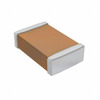 CL10C221JC8NNNC
CL10C221JC8NNNC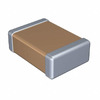 C4532X7T2J304M250KA
C4532X7T2J304M250KA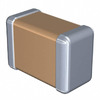 C3216CH2W103J160AA
C3216CH2W103J160AA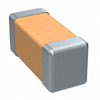 C0402C0G1C0R9B
C0402C0G1C0R9B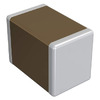 GRT21BR60J476ME13L
GRT21BR60J476ME13L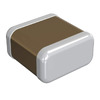 GRM0335C2A5R8DA01J
GRM0335C2A5R8DA01J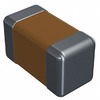 06033C153KAT2A
06033C153KAT2A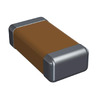 12068A151JAT2A
12068A151JAT2A 22253C225JAT2A
22253C225JAT2A T494B226K006AT
T494B226K006AT
- TAP685M016CCS-LF
- SCS110AGC
- TPSD226K035A0125
- ZXM61N02FTA
- MC68332GCEH20
- LM393PWR
- EDFA232A2PF-GD-F-D
- MAX860ESA+
- AD8609ARUZ
- MMPF0100NPAZES
- 2903308
- 1MBI600LN-060
- BYT200PIV400
- ADS1018IDGST
- TPS54613PWPRG4
- LM3S5791-IQC80-C1
- T491C106K016AT4807
- 74AC04SJX
- NCV2574DW-ADJR2G
- OP491GSZ-REEL7
- XC9572XL-10PC44C
- EUP3411MIR1
- ICS950202BFT
- IP4365CX11/P
- LTC1142HVCGTR
- MT58LC64K32B4LG-9
- R8A66950BG
- SST39SF040A-70-4C-NHE
- TMS320VC5420GGU
- OMAP4470CBS
- SCK30DN512ZVLQ12
- HM62256ALFPI-5T
- MAX322CSA
- RTL8139CL
- PMB2900HV3.3
- BCM7634YKFEB5G
- LM317TGTO220
- KMN5W000ZM-B207
- ALC888S-VD2